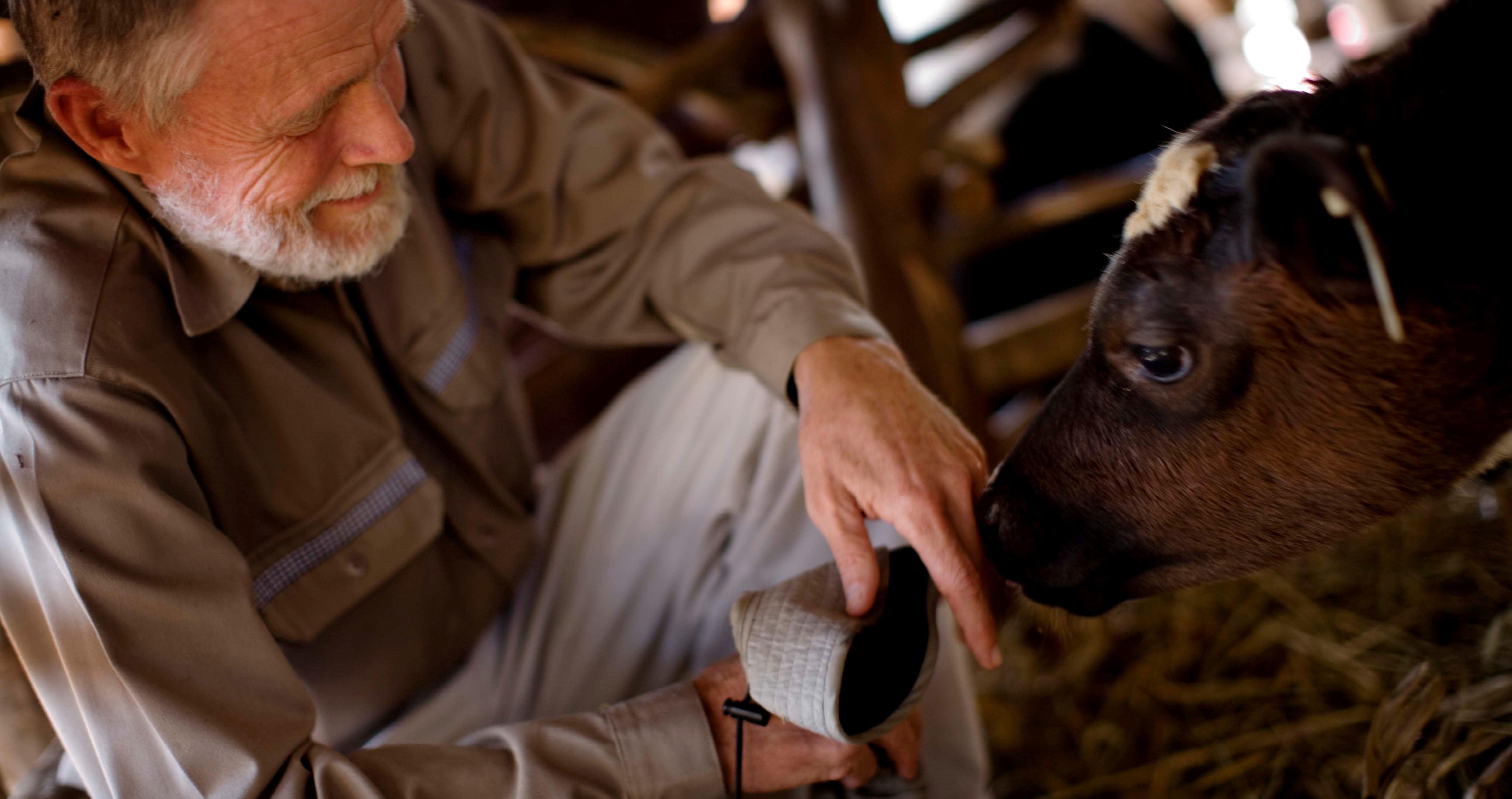
The American Dairy Part II: A New Role for Veterinarians
Health and Safety Struggles
Working on a dairy farm is no walk in the park. The idyllic backdrops of the cows grazing on rolling pastures, as the HappyCow advertisement depicts, conveniently leaves out the tough images of the farmers, producers, and dairy workers that work tirelessly to produce that great milk from happy cows. Although this is not a critique on the advertisement, it does highlight an issue that is becoming discussed more and more in today's media; that is, what is the reality of the U.S. dairy industry.
Although it may not be known or appreciated by the general public, working in the dairy industry is a dangerous profession. Consumer attention often is focused on issues of animal welfare; however, the working conditions and workers' health and safety is often overlooked. Working in the dairy industry is known to have inherent risks, however dairy-related claims are one of the leading causes of workers' compensation indemnity claims among livestock workers. The majority of these nonfatal worker injuries on dairy farms are related to animal handling with cattle, often resulting in job restrictions.
As discussed in last week's Weekly Topic, it is important to understand the workers demographics on dairy farms in the US. Immigrant workers make up half of the workforce on dairy farms in the Upper Midwest. Their demographics are largely young Hispanic males with limited English proficiency and lacking formal education. In addition, they often receive little on the job training and almost no health and safety training as the economic cost of running dairy farms often leaves producers with relatively tight margins for activities such as training and education leaving workers particularly vulnerable to injuries on the farm.
Veterinarians' Strengths
Veterinarians are viewed by farmers as an important source of information regarding disease control, promoting animal health, and improving economic productivity. This places veterinarian in a unique position to therefore have an influence on the health and safety of the farms they visit. As the experts in topics related to animal handling, welfare, and zoonotic diseases, we can transition these expertise to have direct implications on the health and safety of dairy workers.
Let's consider our training for a moment. The World Animal Health Organization (OIE) provides a list of competencies for graduating veterinarians (Day-1 competencies) in order to ensure the highest quality of veterinary services globally. Importantly, these competencies not only highlight an understanding of the health of our patients but also demonstrate a responsibility towards human and public health.
We don’t even have to go as far as an intergovernmental organisation (IGO) to see the importance of veterinarian’s role in human and public health, but can also see it reflected in the Association of American Veterinary Medical Colleges (AAVMC) Competency-Based Veterinary education. The AAVMC working group acknowledge that an understanding of the health and safety of people and the environment, recognition of zoonotic disease and responding accordingly including the education of owners, and advising stakeholders on practices that promote animal welfare including recognizing proper handling and/or adequate production facilities are cornerstones to our profession. So as veterinarian where do we go from here?
Healthcare team member
Veterinarians, with their broad understanding of One Health principals, are key to promoting worker health and safety as it pertains to human-animal interaction. It is important that veterinarians engage as a member of the health and safety care team on dairy farms as we are considered experts in these areas on human-animal interaction.
If we consider the traditional roles of the veterinarian on dairy farms, we recognise that vets have influence at many kee points in health and safety. Importantly, the vet is able to recognize areas for improvement or education, such as the use of appropriate and safe animal handling techniques or understanding the value of general hygiene and herd biosecurity (e.g. infection control). These are common areas that can lead to worker injuries through poor animal handling techniques, improper practices in handling vaccines or biologics (i.e. needlestick injuries) and zoonotic diseases through inappropriate personal protective equipment (PPE) or hygiene.
As veterinarians, we should not shy away from these roles involving worker health and safety, and recognize not only our professional role but also the new avenues of potential business growth through the creation and incorporation of a health and safety plans and education into our regular herd visits. Veterinarians are able to educate the dairy worker staff, managers and owners on proper care and handling of animals as an active member involved in the routine workings of the dairy.
Not only does this have implication on worker health and safety but also animal production, as human factors such as rough handling or improper management techniques can adversely affect cow productivity. As it is well known that working on dairy farms carries inherent risks of potential injury, we should no longer take a side role to prevent it. it's our job to start thinking outside the box about how to reduce those risks and therefore help protect a valuable sector in our industry.
